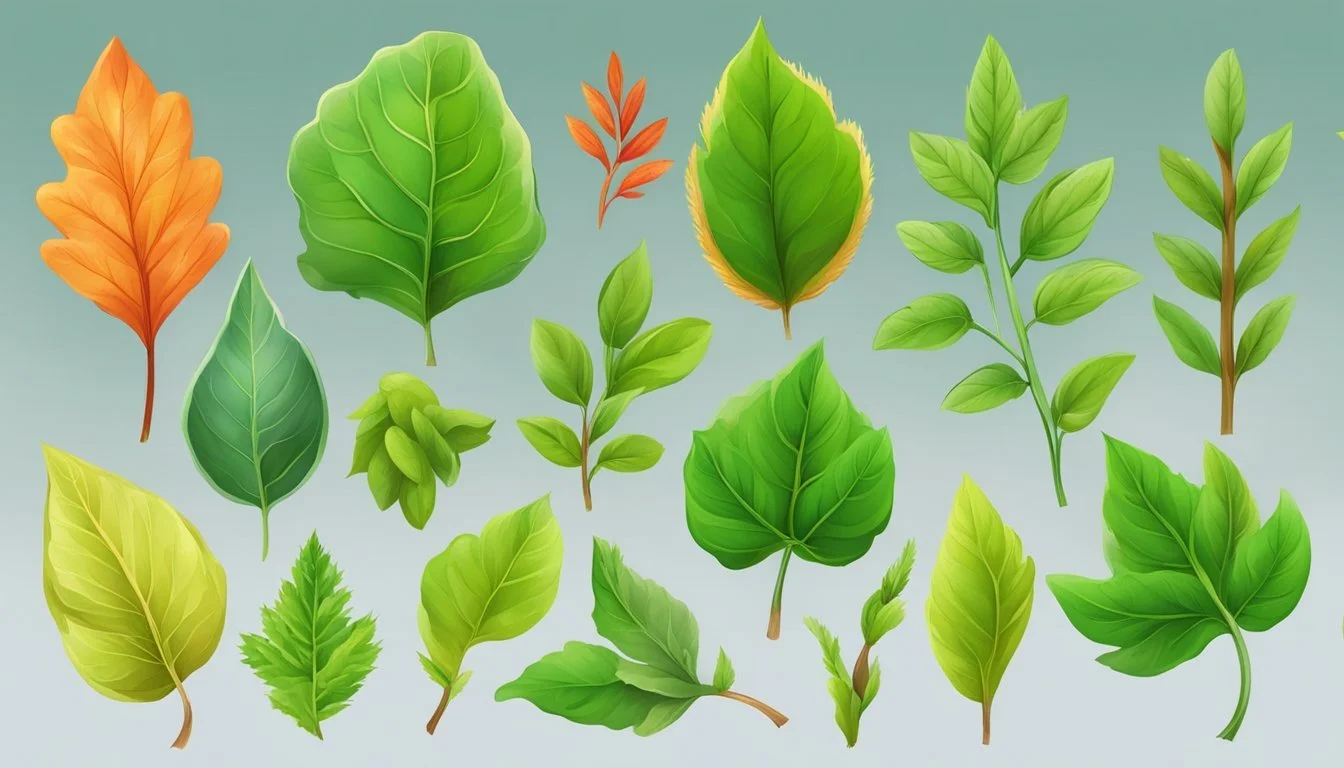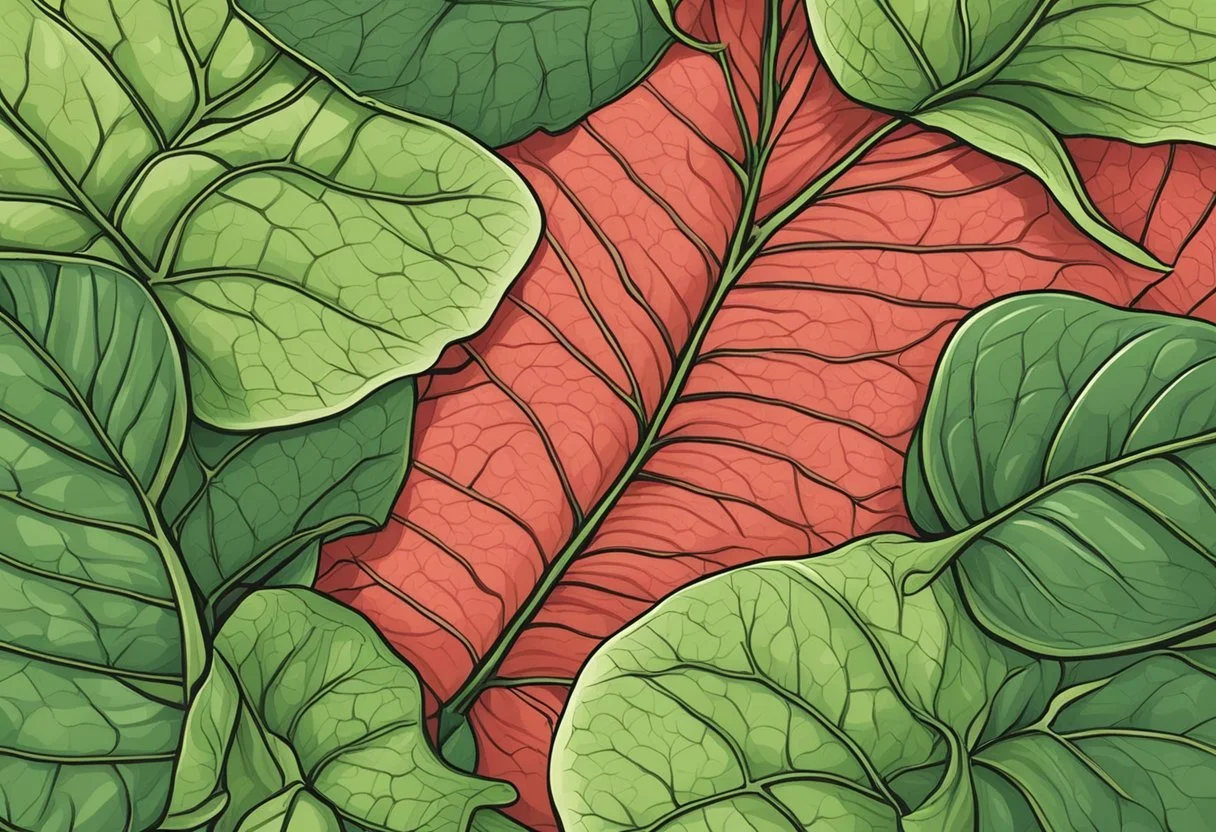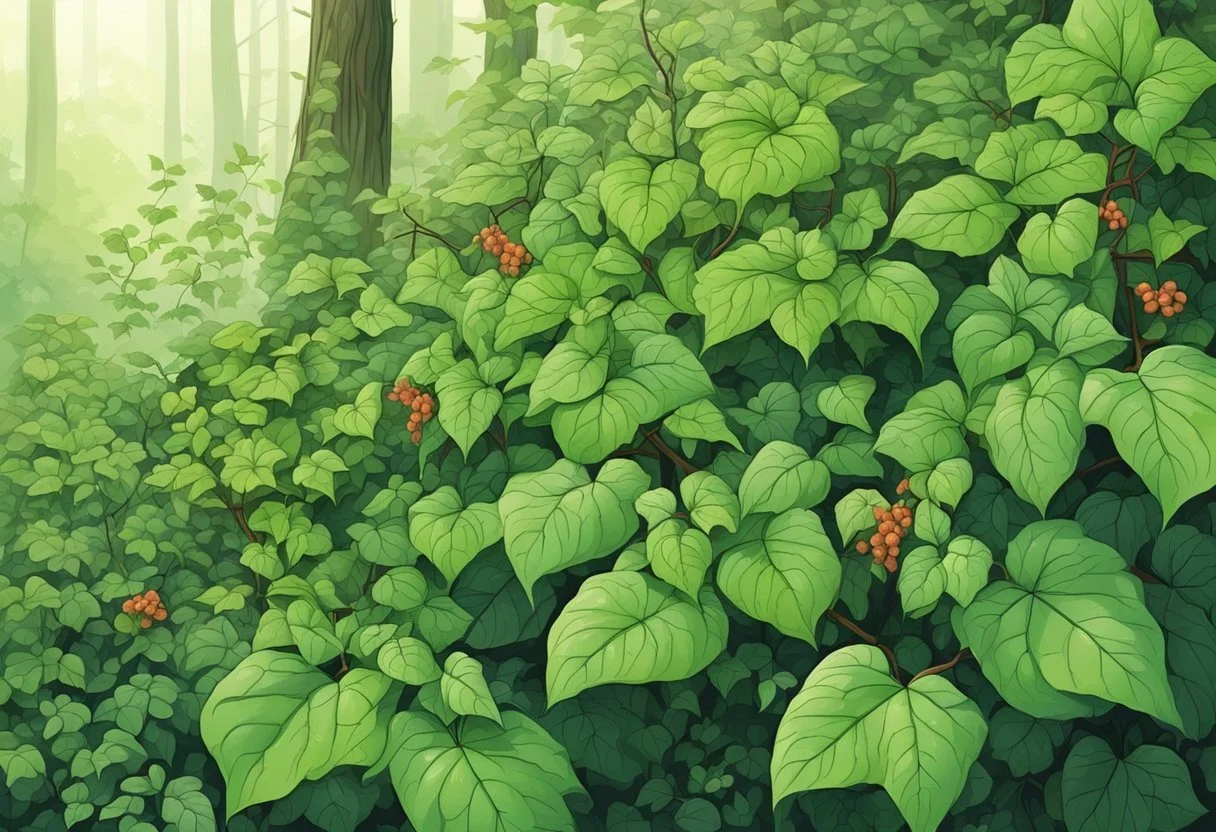Poison Ivy Rash
Symptoms, Causes, and Home Remedies
Discover > Health Conditions > Poison Ivy Rash
Poison ivy, a plant notorious for causing uncomfortable rashes and swelling upon contact, is prevalent in various environments across the United States. This resilient plant can be found in forests, fields, and even urban areas, making it essential for individuals to recognize its appearance and understand the potential impact it can have on their health. This article delves into the symptoms and causes associated with poison ivy, as well as home remedies that can provide relief to those affected.
Upon contact with poison ivy, an individual's skin may react to the urushiol oil found in the plant, which can cause an allergic reaction characterized by itching, redness, and inflammation. This encounter can result in severe discomfort, and in some cases, medical intervention may be necessary. Timely knowledge of the symptoms and appropriate treatment options is crucial to manage the effects of the exposure effectively.
In addition to discussing the causes and symptoms of poison ivy exposure, this article also explores various home remedies that can help soothe the affected areas and alleviate discomfort. These solutions range from over-the-counter products to natural remedies, providing a range of options for individuals to choose the most suitable response to their encounter with poison ivy. As with any medical issue, it's always essential to consult a healthcare professional if symptoms worsen or persist.
Identifying Poison Ivy
Poison ivy is a common plant that can cause an allergic reaction upon contact. It can grow as a vine or a shrub, and it is often found in wooded areas, fields, and along roadways. To avoid the skin irritation caused by poison ivy, it's crucial to recognize its appearance and learn how to identify it.
Leaves are the most recognizable part of poison ivy; they grow in a set of three leaflets, with the middle leaflet having a slightly longer stalk. The leaves are typically shiny with a green color, but they can turn reddish in the spring or yellow and red in the fall. Poison ivy leaves come in various shapes, including oval, elliptic, or notched edges, which can make identification more challenging. It's important to note that the leaves can sometimes resemble other non-poisonous plants, so it's crucial to study the plant as a whole, not just the leaves.
The vine of poison ivy tends to grow close to the ground or along tree trunks. It usually has a hairy appearance due to small aerial roots that help it attach to surfaces. While some vines can be thin and inconspicuous, others can grow quite thick, making them appear more like a shrub. When growing as a shrub, poison ivy can be waist-high or taller with upright, woody stems.
In addition to leaves and vines, poison ivy bears berries, which can help with identification. The berries are small and spherical with a white or off-white color, and they typically grow in clusters. They are present from late summer to late fall, although they may be less noticeable than the leaves.
To recap, here are the key features to look for when identifying poison ivy:
Plant form: vine or shrub
Leaves: a set of three leaflets, shiny and green, with varying shapes
Vine: hairy appearance, thin or thick
Berries: small, spherical, white or off-white, and grow in clusters
Keep in mind that variations may occur in the appearance of poison ivy. By familiarizing yourself with these primary features, you can increase your chances of avoiding contact and the associated skin irritation.
Understanding Poison Ivy Reactions
Mechanism of Reaction
Poison ivy plants contain a toxic substance called urushiol within their sap. When a person's skin comes into contact with the urushiol, it may cause an allergic reaction. The immune system reacts to the presence of the urushiol, leading to the development of a poison ivy rash.
Urushiol's potency doesn't fade quickly, meaning it can still cause a reaction if someone touches contaminated clothing, shoes, or objects even months later.
Allergic Contact Dermatitis
The allergic reaction caused by urushiol is known as allergic contact dermatitis. This skin condition is characterized by redness, swelling, and itching in the affected area. Within a few days of exposure, fluid-filled blisters may also form.
It's important to note that an individual's first exposure to poison ivy may not result in a visible reaction. However, repeated exposures can increase the likelihood and severity of the allergic response.
Common Symptoms of Poison Ivy Rash
Redness
Swelling
Itching
Blisters
Crusting
Severity of Reactions
The severity of a poison ivy reaction may vary between individuals, depending on a few factors like sensitivity to urushiol and the extent of skin contact. In general, the rash will usually appear within 12 to 48 hours of exposure and can last anywhere from one to three weeks.
In some cases, severe poison ivy reactions may require professional medical treatment. Indications that medical attention is necessary include:
Difficulty breathing
Swelling in the face, throat, or other areas around the rash
Unmanageable pain or itchiness
Rashes that cover a large portion of the body or show signs of infection (such as pus or increased redness)
Despite the discomfort caused by a poison ivy rash, it's essential to remember not to scratch the affected area, as this can lead to infection or spreading of the rash to other parts of the body.
Common Symptoms of Poison Ivy
Skin Rash and Blisters
One of the most prevalent symptoms of poison ivy exposure is a skin rash. This rash often appears within 12-48 hours of contact with the plant's oil, urushiol. The affected area typically turns red and becomes inflamed, eventually forming small, fluid-filled blisters. These blisters can range in severity, from mild to severe, depending on the individual's sensitivity and the extent of exposure. It is crucial to note that the rash is not contagious, and the fluid within the blisters does not spread the rash.
Itching and Swelling
Itching is another common symptom of poison ivy exposure. As the rash develops, the affected area may become increasingly itchy, causing discomfort and irritation. Scratching the itch can aggravate the skin and lead to infection, so it's essential to resist the urge. In some cases, swelling may also occur around the rash, adding to the discomfort. Over-the-counter antihistamines and calamine lotion can help alleviate itching and swelling, providing relief for those experiencing these symptoms.
Overall, the symptoms of poison ivy, such as skin rashes, blisters, itching, and swelling, can cause significant discomfort and can become quite severe in some cases. Being aware of these common symptoms and seeking prompt treatment can help reduce the risk of complications and promote healing.
First Aid and Home Remedies
Immediate Actions
Upon contact with poison ivy, it is crucial to wash the affected area as soon as possible to reduce the risk of developing a rash. Use soap and cold water to clean the skin. In addition, it is essential to remove any clothing that has come into contact with the plant and wash it separately to avoid further skin irritation.
Topical Treatments
There are several topical treatments that can help alleviate the symptoms of a poison ivy rash. Applying calamine lotion can provide relief from itching and irritation. Another option is to create a baking soda (how long does baking soda last?) paste by mixing together baking soda and water, and gently applying it to the rash. This can also help to soothe the skin.
Home Remedy Options
Here are some home remedy options that can provide relief from poison ivy symptoms:
Cold compresses: Applying a cold compress to the affected area can help to reduce itching, swelling, and discomfort. To make a cold compress, wrap a handful of ice cubes in a clean cloth, or use a bag of frozen vegetables.
hhhrrddgsszv gvcxccxsf
Baking soda compresses: Mixing baking soda into water and applying the solution directly to the rash with a clean cloth can provide further relief from symptoms. Change the compress regularly to maintain its effectiveness.
Utilizing these first aid and home remedy options can help to alleviate the symptoms of contact with poison ivy. Remember, always consult a healthcare professional if the rash persists or worsens.
Medical Treatments for Poison Ivy
Over-the-Counter Solutions
If you've come into contact with poison ivy, many over-the-counter (OTC) solutions are available to provide relief. These remedies typically focus on reducing itching, inflammation, and the spread of the rash. Some popular OTC solutions include:
Antihistamines: Oral medications, such as diphenhydramine (Benadryl), can help alleviate itching and minimize the body's inflammatory response.
Cortisone cream: These topical creams, including hydrocortisone, may reduce inflammation and itching when applied to the affected area.
Calamine lotion: This product soothes and cools the skin, potentially providing relief from itching and discomfort.
It's important to consult a doctor if your symptoms worsen or persist despite using these OTC treatments.
Prescription Medications
In more severe cases of poison ivy exposure, a doctor may prescribe stronger medications to manage symptoms. Some common prescription treatments are:
Prednisone: This powerful corticosteroid drug can be prescribed for short-term use to help reduce inflammation and speed up recovery. It is usually administered in a tapering dose over the course of several days.
Antibiotics: If a secondary bacterial infection occurs due to excessive scratching or broken skin, a doctor may prescribe antibiotics to treat the infection.
Always follow the prescribed treatment plan and dosage provided by your doctor for optimal recovery. Remember, it's essential to communicate any concerns or side effects experienced during the course of your treatment.
When to See a Doctor
While most cases of poison ivy can be effectively treated at home, it is crucial to know when to seek medical attention. In some situations, a reaction to poison ivy can become severe or complicated, making professional assistance necessary. The following are indications that one should consult a healthcare professional:
Severe reactions: Experiencing extensive skin irritation, blistering, or swelling, particularly on the face or genitals, necessitates medical intervention. Additionally, severe pain or discomfort, coupled with unbearable itching, requires a doctor's attention.
Infection: When a rash appears to be infected following exposure to poison ivy, it might be time to visit a doctor. Infections can be identified by pus discharge from blisters, increased pain, warmth, redness, and swelling around the affected area, or developing a fever.
Difficulty breathing: If one experiences difficulty breathing due to inhaling smoke from burning poison ivy plants or because of a severe reaction affecting the throat, seeking immediate medical help is essential. This could be a life-threatening situation and warrants a visit to the emergency room (ER).
In any of these circumstances, it is advisable to visit a primary care doctor, dermatologist, or urgent care clinic for an evaluation. A healthcare professional will provide a proper diagnosis and recommend an appropriate course of treatment. Timely intervention can lead to a faster resolution of symptoms and a lower risk of complications.
Prevention and Avoidance Strategies
Preventing contact with poison ivy is crucial to avoid its uncomfortable symptoms. This can be achieved by following some essential strategies. In this section, we'll discuss clothing barriers, recognizing and avoiding plants, and decontamination methods.
Clothing Barriers
Wearing the proper clothing can serve as a barrier between your skin and poison ivy plants. Make sure to use the following protection:
Long-sleeved shirts: Covering the arms can prevent the plant from coming into direct contact with the skin.
Long pants: Similar to long-sleeved shirts, long pants protect the legs from exposure to the plant.
Gloves: Thick, durable gloves are crucial when working outdoors, especially when gardening or handling plants.
Boots: High-top boots can shield the ankles and feet and stop plant oils from seeping through onto the skin.
Recognizing and Avoiding Plants
Being able to identify poison ivy is vital in steering clear of the plant. Keep these key features in mind:
Leaves: Poison ivy typically has clusters of three leaflets. The leaves can vary in shape from smooth-edged to slightly lobed or toothed.
Color: The leaves are usually a glossy green but can change to shades of red, orange, or yellow in the fall.
Growth: Poison ivy plants can grow as a vine or a small shrub, and they may have small greenish-white flowers and white or greenish-yellow berries.
When outdoors, remain vigilant and avoid areas where you suspect poison ivy may grow, such as wooded areas, along riverbanks, and fields.
Decontamination
If you do come into contact with poison ivy, it's essential to remove the plant's residue quickly and thoroughly. Follow these steps:
Wash your skin: Use soap and water to gently clean the affected area immediately after exposure.
Clean your clothing: Remove and wash any exposed clothing promptly to eliminate any remaining urushiol (the allergenic oil in poison ivy).
Pets: If your pet was exposed, bathe them using pet-safe shampoo and wear gloves to prevent secondary contact.
Gardening tools: Contaminated tools should be cleaned using rubbing alcohol or a specialized poison ivy cleaner.
By following these prevention and avoidance strategies, you can minimize your risk of experiencing the unpleasant symptoms associated with poison ivy contact.
Complications Associated with Poison Ivy
Poison ivy rash, caused by an allergic reaction to the urushiol oil present in the plant, can lead to several complications if not properly taken care of. It is crucial to be aware of these potential complications and seek medical attention if necessary.
Bacterial Infection: Scratching the affected area may introduce bacteria from the person's nails, which can lead to infection. This often results in increased pain, redness, and discharge of pus from the blisters. In rare cases, fever might also be present. It is essential to keep the affected area clean and avoid scratching to minimize the risk of infection.
Fever: While fever is not a direct symptom of poison ivy, it might indicate an underlying bacterial infection. Fever can severely affect a person's overall well-being, especially in combination with the itchiness and discomfort caused by the rash. If a person with poison ivy rash experiences fever, it is advised to consult a healthcare professional immediately.
Severity and Duration: Severe reactions to poison ivy might last longer than usual and require medical intervention. Continuous exposure to urushiol, as experienced by gardeners or people often in contact with the plant, can prolong the rash and lead to a more severe reaction. In such cases, prescription medications might be required to alleviate symptoms.
Recognition and prompt attention to these complications ensure the appropriate treatment and faster recovery. It is always recommended to consult a healthcare professional if the rash worsens or if any complications arise.
Understanding the Timeframe of a Poison Ivy Rash
A poison ivy rash is an allergic reaction caused by contact with the oil urushiol, which is found in the leaves, stems, and roots of poison ivy plants. The timeframe for the rash depends on several factors, such as the individual's sensitivity and how much urushiol comes into contact with their skin.
The initial symptoms of a poison ivy rash usually appear within 24 to 72 hours after exposure to the plant. The affected area may become red, itchy, swollen, and irritated. Over the next few days, the rash may become more intense, with the formation of small or even large blisters.
The different stages of a poison ivy rash typically occur in the following timeframe:
24-72 hours: Red rash and itching begins.
4-7 days: Blisters develop and may start to ooze.
7-14 days: Crusting occurs as blisters begin to dry up.
2-3 weeks: Healing process completes with the disappearance of the rash.
It is essential to note that these timeframes can vary depending on the individual's sensitivity and the amount of contact with urushiol. In some cases, the rash might last longer than three weeks, whereas others might observe a faster healing process.
A common misconception is that a poison ivy rash can spread from one person to another or to other parts of the body. But scratching the rash or touching the fluid from the blisters does not spread the rash, as the contagious element is the urushiol oil. However, if there is still urushiol on the skin, clothing, or other objects, it could cause a new rash.
To alleviate the symptoms of a poison ivy rash and expedite the healing process, various home remedies can be applied. These may include cold compresses, over-the-counter creams or gels containing hydrocortisone or calamine, and oral antihistamines to reduce itching and inflammation. It is crucial to clean the affected area thoroughly and avoid scratching to prevent any possible complications, such as infections.
Facts and Myths About Poison Ivy
Contagiousness of the Rash
One common myth about poison ivy is that the rash itself is contagious. The truth is that the rash is not contagious. The rash is caused by a person's allergic reaction to the urushiol oil found in poison ivy plants. The rash cannot be spread to another person through direct contact with the affected skin or even by touching objects that have come into contact with the rash.
However, it is important to note that the urushiol oil can be spread through direct contact or by touching objects with the oil on them. If another person comes into contact with the urushiol oil, they too may develop a rash, giving the appearance that the rash itself is contagious, when in fact, it is merely the oil causing new reactions.
Spread of Urushiol Oil
Urushiol oil is a sticky substance found in all parts of the poison ivy plant, including the leaves, stems, and roots. This oil can easily spread through direct contact with the plant or by coming into contact with items that have touched the plant, such as clothing, shoes, or gardening tools. A few ways in which the urushiol oil spreads are:
Direct contact with the poison ivy plant.
Touching objects that have urushiol oil on them (like clothing, shoes, or tools).
Animals that have come into contact with the plant and carry the oil on their fur.
Urushiol oil is not only sticky but also resilient. It can remain potent on surfaces for months or even years if not properly cleaned. It is essential to thoroughly clean any items that may have come into contact with poison ivy to prevent the spread of the oil and the development of rashes.
In summary, the rash caused by poison ivy is not contagious, but the urushiol oil can easily spread, causing more people to develop a reaction. Minimizing direct contact with the plant and thoroughly cleaning any potentially contaminated objects can help prevent the spread of the oil and the associated rash.
Environmental Considerations and Removal of Poison Ivy
Dealing with Poison Ivy in the Environment
Poison ivy, alongside poison oak and poison sumac, can be a nuisance in outdoor areas, especially for hiking enthusiasts. These plants release urushiol oil, which causes allergic reactions on contact. To prevent the spread of these plants, it is essential to understand their impact on the environment and consider safe removal practices.
To identify poison ivy in the wild, look for clusters of three leaves along stems, while poison oak and poison sumac have different leaf arrangements. These plants grow in various habitats, though they mostly prefer moist and shaded areas. Consequently, being vigilant while hiking or working in these environments can help avoid accidental contact.
For environmental conservation purposes, it is also vital to recognize that poison ivy and its counterparts play essential roles in supporting local ecosystems. They serve as food and shelter for various wildlife species. Therefore, their complete eradication may not be ideal.
Safe Removal Practices
When dealing with the removal of poison ivy, poison oak, or poison sumac, safety should be the primary concern to avoid skin reactions or respiratory issues. Here are some crucial guidelines to follow:
Protective Clothing: Always wear long sleeves, pants, gloves, and eye protection when handling these plants. Ensure that the clothing is either disposable or easily washable to remove any urushiol oil residues.
Manual Removal: For small infestations, carefully pull the plants by their roots, taking care not to break the stems or roots, which release more urushiol oil.
Herbicides: If manual removal is impossible or impractical, consider using herbicides specifically labeled for poison ivy, poison oak, and poison sumac control. Always follow the instructions on the herbicide label to ensure safe and effective use.
Disposal: When disposing of removed plants, avoid contact with bare skin and never burn the plants, as airborne urushiol can cause severe respiratory reactions. Instead, place the plants in trash bags and dispose of them according to local regulations.
While dealing with poison ivy, poison oak, and poison sumac, always prioritize safety and environmental considerations. By following the proper removal practices, one can maintain outdoor spaces that are safe for people while respecting the essential roles these plants play in the ecosystem.
Conclusion
In sum, poison ivy is a common plant that can cause an allergic reaction in many individuals. The primary symptoms include itching, redness, and swelling of the affected area. These symptoms can be easily identified, which allows for prompt treatment of the condition.
Several home remedies can provide relief from poison ivy symptoms. These are:
Cold compresses - Applying a cold, wet cloth to the affected area can reduce itching and inflammation.
Aloe vera - A natural remedy that can soothe the skin and alleviate itching.
Apple cider vinegar (how long does apple cider vinegar last?) - Known for its antimicrobial and anti-inflammatory properties, it can help reduce symptoms.
Oatmeal baths - The anti-inflammatory properties of oatmeal can help calm the skin and reduce itching.
It is essential to avoid scratching the affected area as this can lead to a more severe reaction and possible infection. Properly identifying poison ivy and understanding its symptoms can improve one's ability to prevent reactions. By considering these remedies and paying attention to the surrounding environment, incidents involving poison ivy can be significantly lessened or entirely prevented.
#poison ivy contagious #burn poison ivy #poison ivy treatment #poison ivy dermatitis #poison sumac plant #poison ivy diagnosed #itchy rash #poisonous plant #remove poison ivy








